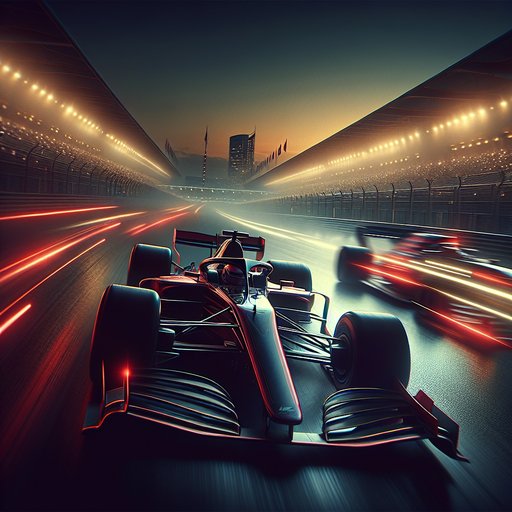
Japan’s Super Formula has spent the past year sharpening its edge as the quickest spec single-seater championship in the world, pairing Dallara’s SF23 with fierce Toyota–Honda engine competition and a driver roster that keeps global talent scouts watching. The narrative arc has been defined by Ritomo Miyata’s 2023 title, Tomoki Nojiri’s sustained front-running form after back-to-back crowns in 2021 and 2022, and the ripple effect from Liam Lawson’s standout 2023 stint that amplified international attention. With stable regulations into 2024, the series has delivered tightly packed qualifying sessions, strategic variability, and race outcomes that reward precision as much as outright pace. What follows is a concise, fact-checked recap of the key headlines and results context that have framed Super Formula’s recent months, and why they matter to the wider open-wheel ecosystem.
Super Formula’s relevance to motorsport’s evolution lies in its mix of peak performance and accessibility. The SF23 package, introduced in 2023, produces elite cornering speeds and low drag in a spec framework that spotlights drivers and engineers over budget muscle. With Honda and Toyota supplying the turbos, the series preserves a manufacturer duel without letting arms races overwhelm competition. In an era when single-seater ladders can feel siloed, Super Formula offers a high-speed, high-credibility proving ground that speaks to both F1 and IndyCar talent pipelines.
The headline result of the modern era is the sequence of champions that reset the pecking order. Tomoki Nojiri captured consecutive titles in 2021 and 2022, establishing Team Mugen’s benchmark pace. In 2023 Ritomo Miyata won the championship with relentless consistency, edging a field that included multiple race winners and the high-profile Liam Lawson in a season that went down to the finale at Suzuka. The throughline is competitive depth: front-running seats at Mugen, TOM’S, Impul, and Inging regularly trade blows, and small setup gains swing entire weekends.
Technically, the SF23 has been the catalyst for the series’ current momentum. Dallara’s lighter, aerodynamically efficient chassis encourages following and rewards clean driving, while Bridgestone’s control tyres and an overtake system keep racecraft central to outcomes. The championship’s sustainability push—paired with domestic fuel developments and a focus on recyclable materials—has been implemented without sacrificing speed, an important signal for the next generation of single-seaters. Crucially, the package has remained stable into 2024, allowing teams to refine rather than reinvent and giving drivers a transparent platform to showcase pace.
On-track, the results picture across late 2023 and into 2024 reflects that stability: margins in qualifying are razor-thin, pit windows are strategically decisive, and tyre life management often decides who converts pole into victory. Suzuka and Fuji continue to foreground aerodynamic confidence, while Autopolis and Sugo tend to amplify mechanical balance and tyre discipline. The variety of venues ensures that no single driving style or setup philosophy dominates for long, which is why season-long champions have typically combined podium consistency with opportunistic race management. That blend is what allowed Miyata to secure 2023 honors and kept proven winners like Nojiri firmly in the hunt across multiple campaigns.
The series’ recent headlines also underline its role as a launchpad. Lawson’s 2023 Super Formula run and subsequent Formula 1 cameo put a global spotlight back on the championship’s competitiveness. Earlier alumni reinforce the point: Nick Cassidy parlayed his 2019 Super Formula crown into a Formula E title in 2023, while Alex Palou’s 2019 stint preceded multiple IndyCar championships. Even Naoki Yamamoto’s two titles (2018 and 2020) and his Suzuka Formula 1 practice appearance in 2019 showcased how Super Formula’s front-runners sit on the cusp of the world stage.
That track record makes the series’ results meaningful well beyond Japan. As 2024 unfolded under unchanged regulations, the competitive order remained tightly compressed and race outcomes broadly distributed across the leading outfits. With engine maps, tyre warm-up, and pit-stop execution so influential, teams have been rewarded for incremental gains rather than wholesale overhauls. The result profile—frequent lead changes through strategy cycles, podiums decided by small undercut or overcut windows, and late-race charge management—fits the championship’s recent pattern.
In practical terms, fans and scouts have had reason to watch every lap, because a small mistake in traffic or a conservative tyre call can flip the result sheet on its head. Taken together, the recent Super Formula storyline is one of sustained quality and rising international relevance. The champions’ roll call from 2018 onward—Yamamoto, Cassidy, Yamamoto again, Nojiri’s double, then Miyata—cements the series’ competitive credibility, while the SF23 package and stable ruleset have turned close racing into a feature, not a coincidence. For observers seeking the signal in the noise, the headline is simple: this is a championship where results are earned the hard way, and where winning form translates across categories.
With Toyota and Honda locked in a genuine fight and teams refining a mature car, Super Formula continues to deliver outcomes that stand up to global comparison. Looking ahead, the ingredients that produced the latest headlines and results remain firmly in place: a fast car, a tight field, and a calendar that tests every aspect of a driver’s craft. That makes the series an essential stop on the open-wheel map, whether you’re tracking champions in the making or reading the tea leaves on who might be next to jump to F1, IndyCar, or the World Endurance Championship. Expect the margins to stay small, the strategies to stay bold, and the final standings to reflect the kind of all-around excellence that has come to define Japan’s premier single-seater series.












